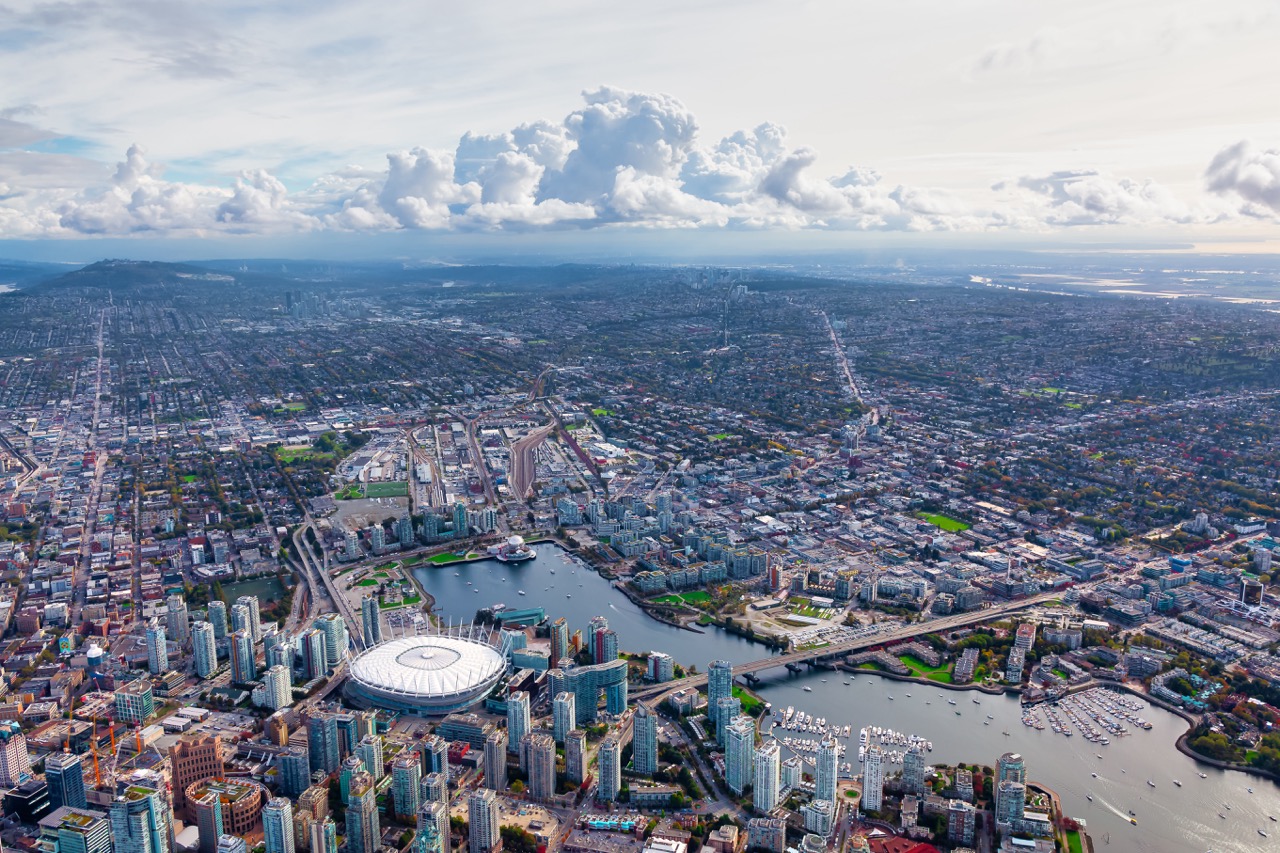British Columbia, with its stunning landscapes and diverse ecosystems, is not only a feast for the eyes but also a vibrant culinary destination. The province’s rich tapestry of cultures and traditions reflects in its cuisine, showcasing everything from fresh seafood to hearty comfort foods and innovative fusion dishes. This article delves into the iconic dishes of British Columbia, exploring the ingredients, influences, and culinary innovations that define this remarkable region.
Exploring the Culinary Landscape of British Columbia’s Iconic Dishes
British Columbia’s culinary landscape is a reflection of its geographic diversity, from coastal shores teeming with seafood to fertile valleys rich in agricultural bounty. Iconic dishes such as salmon, spot prawns, and Dungeness crab exemplify the province’s connection to the ocean, while hearty items like tourtière and bannock showcase its rustic comfort food traditions. These dishes are often celebrated at local festivals and culinary events, drawing attention to BC’s vibrant food scene.
The province’s iconic dishes have evolved over time, influenced by the myriad cultures that have settled here. The melding of Indigenous, Asian, European, and Pacific Islander culinary traditions has given rise to a unique food culture that emphasizes freshness, sustainability, and creativity. Chefs are increasingly embracing local ingredients and traditional techniques, providing diners with an authentic taste of British Columbia’s culinary identity.
As one traverses the landscapes of British Columbia, each region brings its own specialties to the table, creating a diverse array of iconic dishes. The culinary journey here is not only about eating but also about understanding the rhythms of the land and the waters that have shaped its food culture. This exploration of BC’s iconic dishes invites both locals and visitors to appreciate the intricate relationship between the province’s environment and its cuisine.
The Role of Fresh Seafood in British Columbia’s Cuisine
The Pacific Ocean plays a pivotal role in defining British Columbia’s culinary identity, particularly through its abundant seafood. Rich in nutrients and flavor, BC’s waters are home to some of the world’s most sought-after seafood, including salmon, halibut, and shellfish. The cultural significance of these ingredients is deeply rooted in both Indigenous and settler traditions, contributing to a sense of identity and place.
Salmon, often referred to as the "king of fish," takes center stage in many dishes, whether it’s smoked, grilled, or served as sushi. It embodies the spirit of the coast and showcases the region’s commitment to sustainable fishing practices. Additionally, seasonal events such as the annual Salmon Festival celebrate this prized fish, emphasizing the importance of freshness in local cuisine. The respect for ocean resources reflects a broader ethos in BC’s culinary community, where chefs prioritize sustainability and quality.
The culinary practices surrounding seafood in British Columbia are a testament to the region’s environmental consciousness. From dock-to-table initiatives to seafood sustainability certifications, there is a growing movement among chefs and restaurateurs to highlight responsibly sourced seafood. This commitment not only enhances the flavors of iconic dishes but also fosters a deeper connection between diners and the natural resources that sustain them.
Hearty Comfort Foods: A Taste of BC’s Regional Favorites
Comfort food holds a special place in British Columbia’s culinary tradition, often evoking memories of family gatherings and community celebrations. Dishes like shepherd’s pie, clam chowder, and local versions of poutine reflect the hearty, warming quality of BC’s cuisine, often incorporating local ingredients that resonate with the region’s distinct flavor profile.
The comfort foods of British Columbia not only satiate hunger but also tell stories of the province’s cultural heritage. For instance, a warm bowl of clam chowder highlights the coastal influence, while dishes like tourtière showcase the French-Canadian presence in the region. In many cases, these hearty meals are prepared using traditional recipes passed down through generations, fostering a sense of nostalgia and belonging within communities.
Moreover, the rise of craft breweries and local wineries has enhanced the comfort food experience in BC. Many restaurants and pubs pair their hearty dishes with locally brewed beers or regional wines, creating a cohesive dining experience that celebrates local flavors. This blend of tradition and innovation in comfort food reflects the province’s commitment to showcasing its culinary history while adapting to contemporary tastes.
Indigenous Influence: Traditional Dishes Shaping BC’s Identity
Indigenous cuisine in British Columbia is a vital thread in the province’s culinary tapestry, deeply rooted in the traditions and practices of the First Nations peoples. Dishes such as salmon berries, cedar-plank salmon, and various forms of wild game highlight the sustainable practices that have been passed down through generations. These traditional foods are often gathered and prepared using techniques that respect the land and its resources.
The resurgence of Indigenous culinary practices in modern dining is an encouraging trend, as chefs incorporate traditional ingredients and cooking methods into contemporary menus. This not only preserves the heritage and stories behind these foods but also introduces a wider audience to the flavors and cultural significance of Indigenous cuisine. Events such as Indigenous food festivals further promote awareness and appreciation of these culinary traditions.
Additionally, Indigenous chefs and culinary influencers are at the forefront of this movement, leading the way in creating authentic dining experiences that celebrate their heritage. By blending traditional practices with modern techniques, these innovators are not only honoring their ancestors but also shaping the future of BC’s culinary landscape. The recognition and integration of Indigenous influence in British Columbia’s cuisine enriches the province’s identity and fosters a greater understanding of its diverse cultural heritage.
Farm-to-Table: Celebrating BC’s Local Ingredients and Flavors
British Columbia’s farm-to-table movement is gaining momentum, emphasizing the importance of locally sourced ingredients in culinary creation. With its varied climates and landscapes, the province produces a wide array of fruits, vegetables, grains, and meats, making it a haven for farm-to-table enthusiasts. This movement is not only about flavor but also about sustainability and supporting local economies.
Restaurants across British Columbia are increasingly forming partnerships with local farmers and producers to highlight seasonal ingredients in their menus. Farm visits and collaborations allow chefs to create dishes that celebrate the freshest produce available, giving diners a true taste of the region. This commitment to locality not only enhances the dining experience but also fosters a sense of community and responsibility toward the environment.
Moreover, events like farmers’ markets and food festivals play a crucial role in the farm-to-table narrative. They provide platforms for local producers to showcase their goods while educating the public about the benefits of eating seasonally and supporting local agriculture. This vibrant connection between farmers, chefs, and consumers enriches the culinary landscape of British Columbia and reinforces the significance of local ingredients in creating memorable dishes.
The Rise of Innovative Fusion Cuisine in British Columbia
British Columbia stands at the forefront of culinary innovation, where fusion cuisine has emerged as a celebrated aspect of its food culture. The province’s multicultural demographic, featuring influences from Asia, Europe, and Indigenous traditions, provides a wealth of inspiration for chefs eager to experiment with flavors and techniques. Dishes such as sushi burritos and butter chicken poutine exemplify this creative blending of culinary traditions.
The fusion food movement in BC reflects a broader societal trend towards inclusivity and exploration of diverse culinary practices. Chefs often draw from their personal backgrounds and experiences, creating unique dishes that challenge traditional boundaries while remaining respectful of the cuisines they draw upon. This innovative spirit not only invigorates the dining landscape but also invites diners to broaden their culinary horizons.
In addition to enhancing the local dining scene, the rise of fusion cuisine in British Columbia fosters an environment of collaboration among chefs and culinary professionals. By participating in pop-up events and culinary competitions, chefs share their creative interpretations of various cuisines, enriching the province’s gastronomic identity. This collaborative atmosphere ensures that British Columbia remains a dynamic force in the culinary world, continuously evolving while celebrating its diverse cultural roots.
The culinary landscape of British Columbia is a vibrant mosaic of iconic dishes that reflect the province’s rich cultural heritage and natural bounty. From the fresh seafood of the Pacific Ocean to the hearty comfort foods rooted in tradition, every bite tells a story of the land and its people. The influence of Indigenous cuisine, the farm-to-table movement, and the rise of innovative fusion dishes further enrich the culinary experience, making British Columbia a compelling destination for food lovers. As the province continues to evolve and embrace new culinary trends, its iconic dishes will undoubtedly remain a central part of its identity, inviting both locals and visitors to savor the flavors of this remarkable region.





